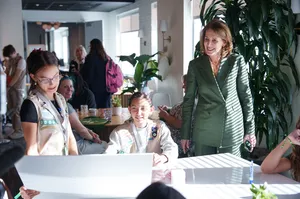Bringing rare artifacts to life in 3D at the NMAAHC
Editor’s note: Google’s 2018 Black History Month celebration began this morning with a Doodle for Carter Woodson. We’re also unveiling a new 3D installation at the National Museum of African-American History and Culture. Stay tuned throughout the month for more on a variety of Black cultural content across many of our products and services.
Most of us have probably wondered once or twice how our lives fit into the scope of human history. Museums have taken on this question for centuries, using artifacts to offer windows into other people’s experience of the world. But there’s always been a limit to what galleries can display—because of the sheer volume of objects, and because some of those items are too fragile to sit in the open or be handled by streams of patrons.
When the National Museum of African-American History and Culture (NMAAHC) opened in 2016, their mission was to redefine how people experience art and artifacts in the modern age. And starting today, visitors to the museum can interact with rare items from Black history in a new 3D installation.
The items in this installation have historical and personal significance. For example, I’ve always loved 70s fashion and style. Seeing scans of actual boots from “The Wiz” takes me back to my childhood delight in seeing the movie and play. I’m also a jazz musician, like my father before me, and seeing a cast of composer and pianist Eubie Blake’s hand reminds me why I still can’t (and probably will never) do his solos justice. My hope is visitors will experience these artifacts and establish deeper connections with their personal stories as well.
Following a $1 million Google.org grant to the museum in 2016, I worked with a mulitracial volunteer team of engineers from the Black Googler Network and other internal organizations to build the exhibit. We were excited to apply the technical skill we’ve honed in our day jobs to create a hands-on exploration of our nation’s history.
When I first met the NMAAHC’s founding director, Dr. Lonnie Bunch, and heard his vision for the museum, I felt a keen responsibility to help bring it to fruition. The stories contained within its walls aren’t only Black stories. They’re American stories. It’s humbling to be one of the people entrusted with the telling. I hope patrons can feel some of the same joy.






